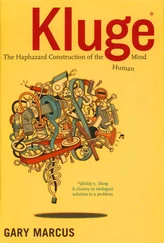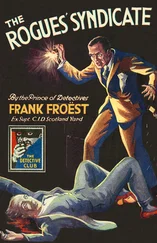Simple crystals such as sodium chloride, the basis of common salt, would be incapable of storing the vast memory needed for genetic information because their ions are arranged in a repetitive or ‘periodic’ pattern. What Schrödinger was proposing was that the ‘blueprint’ of life would be found in a compound whose structure had something of the regularity of a crystal, but must also embody a long irregular sequence, a chemical structure that was capable of storing information in the form of a genetic code. Proteins had been the obvious candidate for the aperiodic crystal, with the varying amino acid sequence providing the code. But now that Avery’s iconoclastic discovery had been confirmed by Hershey and Chase, the spotlight fell on DNA as the molecular basis of the gene. Suddenly new vistas of understanding the very basics of biology, and medicine, appeared to be beckoning.
It was through a mixture of luck and the gut reaction of Perutz that the dilettantish Crick was taken into the fold of the Cavendish. In Perutz’s recollection, Crick arrived in 1949 with no reputation whatsoever in science. ‘He just came and we talked together and John Kendrew and I liked him.’ And so the likeable Crick ended up, in such an idiosyncratic process of selection, working on the physical aspects of biology – what today we call molecular biology – under the guidance of Bragg, Perutz and Kendrew, at the Cambridge laboratory.
In 1934, John Desmond Bernal, an Irish-born scientist with Jewish ancestry and a student of Bragg Senior, had shown for the first time that even complex organic chemical molecules, such as proteins, could be studied using X-ray diffraction methods. Bernal was a Cambridge graduate in mathematics and science, who was appointed as lecturer to Bragg at the Cavendish in 1927, becoming assistant director in 1934. Together with Dorothy Hodgkin, Bernal pioneered the use of X-ray crystallography in the study of organic chemicals – the chemicals involved in biological structures – including liquid water, vitamin B1, the tobacco mosaic virus and the digestive enzyme, pepsin. This was the first protein to be examined at the Cavendish in this way. When, in 1936, Max Perutz arrived as a student from Vienna, he extended Bernal’s work to the X-ray study of haemoglobin.
By the time Crick joined the laboratory, Sir William Bragg had been replaced by Sir Lawrence Bragg, and John Kendrew and Max Perutz had taken Bernal’s findings further to become bogged down in a ‘disastrous paper’ on the chain structures of proteins. And now we discover something distinctly unusual about Francis Crick, something that Perutz may have intuited at their meeting. He had an avid curiosity about science, reading very widely, and he was equipped with a mind capable of amassing a formidable knowledge base across different disciplines. One of the first things he did after his arrival into the Cavendish was to acquaint himself with everything his bosses had achieved. Junior as he was, Crick now took it upon himself to undertake a long, critical look at their work. This he then proceeded to criticise from basic principles. At the end of his first year in the department, Crick presented his criticisms in the form of an ad hoc seminar, borrowing his title from Keats as ‘What Mad Pursuit’. He began with a twenty-minute summary of the deficiencies in the departmental methods before pointing out what he saw as the ‘hopeless inadequacy’ of their investigation of the structure of the haemoglobin molecule. The X-ray analysis of haemoglobin was of course Perutz’s main objective. Bragg was infuriated by the cocky behaviour of this upstart junior colleague, but Perutz would subsequently admit that Crick was right and proteins were far more complicated in their structures than they had initially assumed. Restless and ever-inquisitive, Crick proved to be an uneasy, sometimes downright embarrassing import into the scientific pool of the laboratory. And while Bragg and Perutz saw proteins as the great unsolved puzzle, Crick was more interested in the mystery of the gene.
As 1949 elided into 1950, Crick would subsequently confess that he still did not realise that the genetic material was DNA. But he knew that genes had been plotted out in linear arrays along the chromosomes by people like Barbara McClintock, and that proteins, which had to be the expression of the genes, were also being plotted out as linear arrays, however lengthy and complicated. There had to be some logical way in which one translated into the other. By 1951, two years after his arrival into the Cavendish Laboratory, Crick perceived that these were two different, if necessarily related, puzzles – the mystery of how genes appeared able to copy themselves, and the mystery of how the linear structures of genes translated into the linear structures of proteins.
The wide-reading, voraciously inquisitive Crick needed what Judson termed a catalyst. This arrived in the form of the gangly, equally inquisitive Watson that same year, 1951. From their first meeting, it would appear that here was one of those rare working conjunctions of two odd-ball personalities that, when they come together, make an extraordinary creative whole that is more than the sum of the individual ingenuities. And yet it very nearly didn’t happen.
*
We should recall that Watson was extremely junior within the department. A recent PhD graduate, he had arrived into Kalckar’s laboratory on a Merck Fellowship funded by the US National Research Council. The terms and conditions were laid down and signed for back home, but now here he was abandoning those carefully laid intentions to gallivant from the work in Denmark to follow some giddy new inspiration in England, a place he had never visited in his life and where he knew absolutely nobody. Impulsive and single-minded, Watson would subsequently confess that his head was filled with curiosity about that single DNA photograph. He had tried to engage with Wilkins in Naples after the lecture, at a bus stop during an excursion to the Greek temples at Paestum. He had even tried to take advantage of a visit from his sister, Elizabeth, who had arrived to join him as a tourist from the States. Now here were Maurice Wilkins and Watson’s sister, Elizabeth, finding a common table to take lunch together. Watson sensed an opportunity and barged in, with the intention of ingratiating himself with Wilkins. But the self-effacing Wilkins excused himself, to allow brother and sister the privacy of the table.
His plans foiled, Watson refused to let go of this exciting new avenue of interest. ‘I proceeded to forget Maurice, but not his DNA photograph.’
He stopped over in Geneva for a few days to talk to a Swiss phage researcher, Jean Weigle, who provoked yet more excitement by informing Watson that the eminent American chemist, Linus Pauling, had partly solved the mystery of protein structure. Weigle had attended a lecture by Pauling, who like Bragg in Cambridge had been working with X-ray analysis of protein molecules. Pauling had just made the announcement that the protein model followed a uniquely beautiful three-dimensional form – he had called it an ‘alpha-helix’. By the time Watson arrived back in Copenhagen, Pauling had published his discovery in a scientific paper. Watson read it. Then he re-read it. He was confounded by his lack of understanding of X-ray crystallography. The terminology, in physics and chemistry, was so far beyond him that he could only grasp the most general impression of its content. His reaction was so childishly naïve as to be touching: in his head he devised the opening lines of his own imagined paper in which he would write about his discovery of DNA, if and whenever he discovered something of similar portent.
But what to do to get on board the DNA gravy train?
He needed to learn more about X-ray diffraction studies. Ruling out Caltech, where Pauling would react with disdain to some ‘mathematically deficient biologist’, and now ruling out London, where Wilkins would be equally uninterested, Watson wondered about Cambridge University, where he knew that somebody called Max Perutz was following the same X-ray lines of investigation of the blood protein molecule, haemoglobin.
Читать дальше












